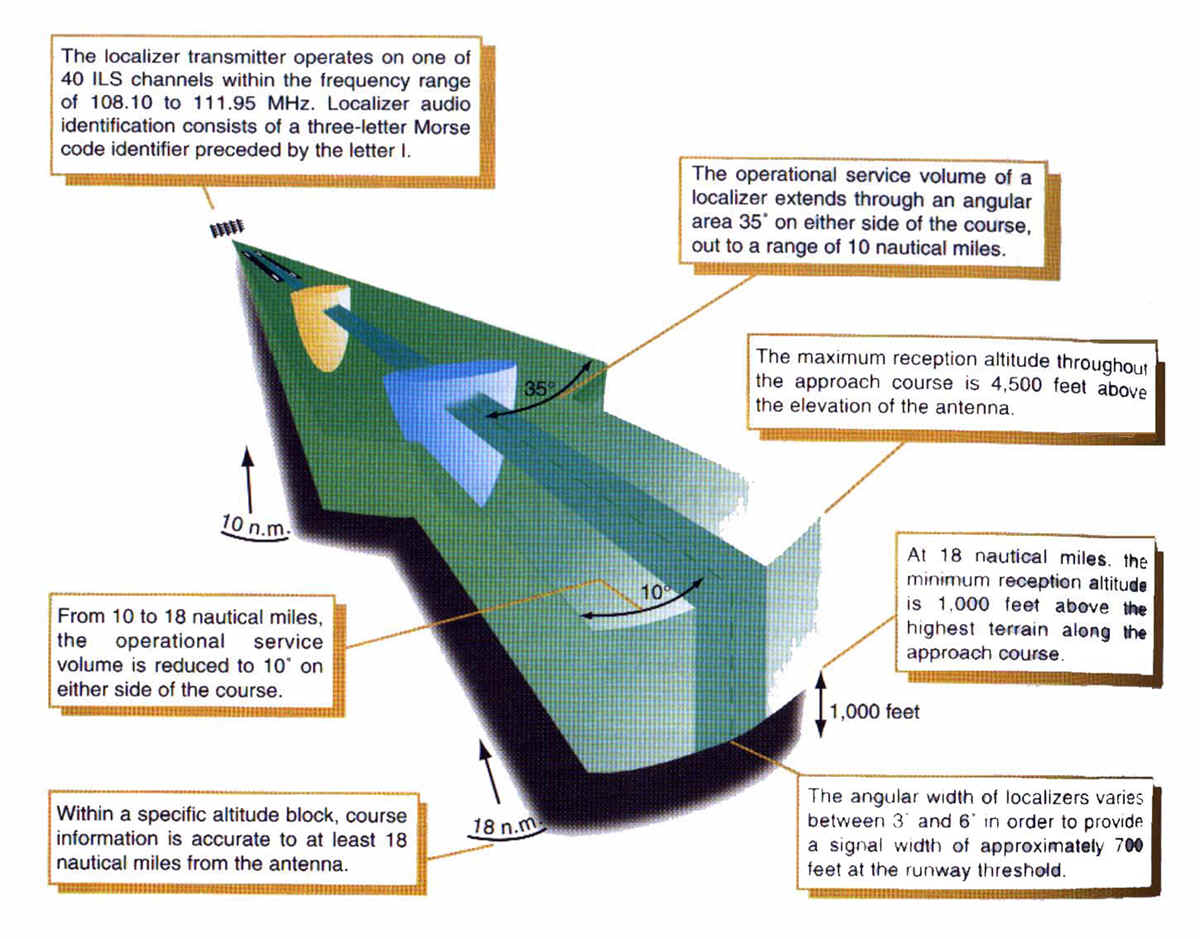

In order to receive the signal from any of the marker beacons, you will need a marker beacon receive, like the ones depicted in Image 3. The IM will usually indicate a point between the MM and the runway threshold that an aircraft has reached his DH, as long as he is on the GS. On a Cat II ILS approach, the minimums will be lower than your average 200ft AG. The IM is rare and most GA pilots will never see one on an approach. Most ILS minimums are around 200AGL (around 2,400 to 4,200ft from the threshold), so the middle marker is a perfect signal to indicate you’ve reached your DH. The MM will indicate a location along the GS when you are about 200ft above the threshold. This is usually around 1,400ft above the runway elevation, which is about 4-7nm from the threshold. The OM will normally indicate a location along the LOC course where you will intercept the GS, as long as you are at the appropriate intercept altitude. If there is a back course LOC approach, there will probably also be a back course marker (BC) to indicate the FAF. There are usually 2 marker beacons associated with an ILS, the outer marker (OM) and the middle marker (mm), however some will also have an inner marker (IM). Marker beacons are used to give range data along the approach course. Second, check your altitude with the altitude you should be at when you are crossing the FAF. The first clue is that you will be on a much steeper descent, so your rate of descent will be more than 318ft per nm. If for some reason you do intercept the false GS, there are ways you can recognize it. The best way to avoid this is to intercept the GS from below, which never puts the aircraft in a position to accidentally intercept the false GS. Coming in at a 9° or 12° angle would be a pretty steep descent and you should probably make the decision to go around. False Glide Slopeĭue to signal reflection, there can be a possibility of a false GS, which usually will end up being a 9° or 12° degree angle to the runway. Once flying below the published DH, you should transition to looking outside and following the PAPI or VASI. Of course you want to do everything you can to remain on GS, but being slightly above it is still safer than being below it. It is best not to descend below the GS because you won’t be guaranteed the obstacle clearance and going above the GS will cause you to have a steeper rate of descent to land. Remaining on the GS will ensure obstacle and terrain clearance. Looking at Image 2, you can see that GS transmitter depicted off the left of the runway there.

The GS transmitter is usually located between 750ft and 1,250ft from the approach end of the runway and is off set about 250ft to 650ft from the centerline. A GS is projection is usually adjusted for a 3° glide path so that it intersects the middle marker (MM) at around 200ft and the outer marker (OM) at around 1,400ft above runway elevation. The GS signal emits in the direction of the LOC front course and the frequency is paired with the LOC frequency. It helps keep guide you down from the FAF to the DA. The glide slope (GS) is the component of the ILS that gives vertical guidance to keep a proper path down to the runway.
RUNWAY LOCALIZER CODE
Both of which have different frequencies and different morse code identifiers. The LOC for RWY 18 is identified by I-PIE and the LOC for RWY 36 is identified by I-CWT. So for example, in KPIE there are 2 ILSs. All LOCs will have a 4 letter code identifiers, all starting with an I. This is good for identifying the LOC’s morse code. You can receive a signal outside of these limits, but they it is not considered reliable. This applies to bother the front and back course. The normal reliable coverage of the LOC is 35° on either side of the course centerline up to 10nm front the transmitter and then 10° of either side up to 18nm. We will focus on the front course for now and talk about the back course later.

Looking at Image 1 (ignore my horrible drawing) you can see both the front course and the back course of the transmitting range. The LOC antenna is located at the far end of the runway departure end. This is what gives the pilot navigation assistance to stay lined up with the runway centerline. The localizer (LOC) gives lateral navigation.


 0 kommentar(er)
0 kommentar(er)
